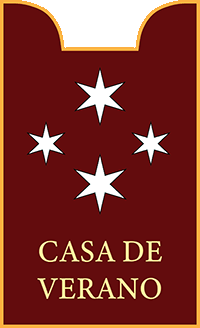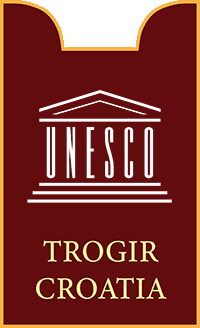
MY TROGIR
A walk through history, beauty and art
Not just a city, it is a way of life!
A walk through history, beauty and art
Not just a city, it is a way of life!

Dear guests, during your stay in our house, you can take a walk with me and learn about the city of Trogir, and its history.
We will visit the most important buildings, take a look at some museums and listen to the music performed by the "Klapa Trogir" (chorus).
I will describe you the daily life in the past, through the stories of nobles and common people and show you where my ancestors lived.
After the walk, I will talk you about typical Dalmatian dishes, we may also visit the fish market, to show you most common types of fish in Dalmatia, and also the green market right next to it.
The walk is free of charge, and I would be very pleased if you join me!
Your guide
Matheo Delalle
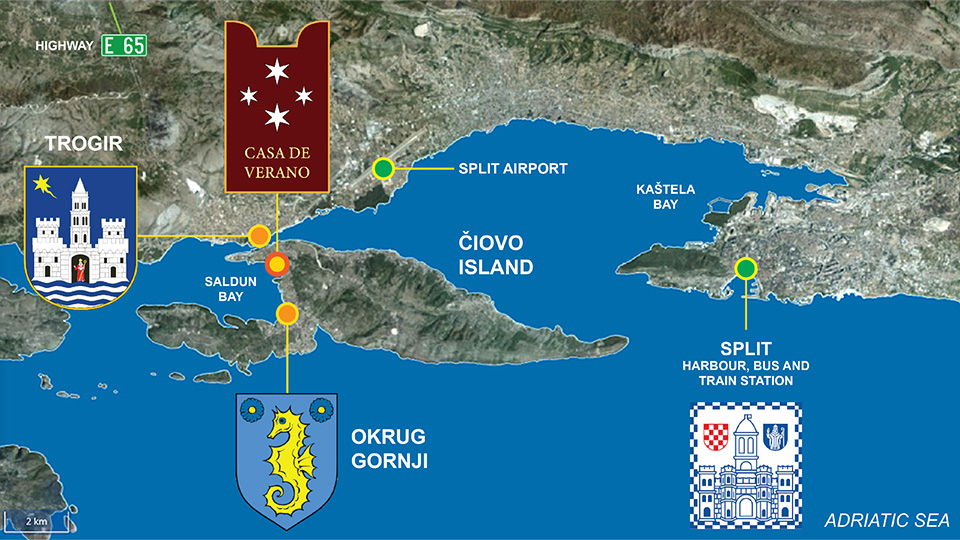
As you can see on the map above, our house is close to the city center, aprox. 10 minutes walk.
Our jurney through the history and art will start at the main square - "Pjaca", in front of the house where my grandpather was born.
On the slides you can see the ROUTE and the MAIN POINTS of our walk.
STARTING POINT - MAIN SQUARE
St. Lawrence's Cathedral
St. Lawrence's Cathedral

Radovan's Portal-main portal of the cathedral in Trogir
Chapel of the blessed John of Trogir (Ivan Orsini)
Chapel of the blessed John of Trogir (Ivan Orsini)

City Hall
Main square - "Pjaca"
Main square - "Pjaca"

Clock tower (votive chursh of St. Sebastian)
on the right, Museum of sacral art
on the left, Town Loggia - Court
on the right, Museum of sacral art
on the left, Town Loggia - Court

Town Loggia -
Court
Interior
Relief of Petar Berislavic by I. Mestrovic
Interior
Relief of Petar Berislavic by I. Mestrovic

Museum of sacral art
Interior
Interior

St. John the Baptist Church
Interior of the curch
Interior of the curch

Church of St. Barbara
Old Chipico palace
My grandfather's birth place
Old Chipico palace
My grandfather's birth place

"Cimatorij" square
New Chipico palace
New Chipico palace

City gate - North side
Sculpture of St. John - Town protector
Sculpture of St. John - Town protector

Garanjin - Fanfogna palace
City museum
City museum

City museum
Interior of the lower level
Interior of the lower level

Streets of Trogir
Stafileo Palace
Stafileo Palace

Andreis palace
St. Peter's Church
St. Peter's Church

Church of the Virgin of Carmel
West part of the town - "Pasike"
West part of the town - "Pasike"

St. Marko's Tower
Football playground
Football playground

Monument to General Marmont
"Batarija" beach
"Batarija" beach

Kamerlengo tower and fortress

"Riva" - Promenade and city harbour

St. Dominic Monastery

Public school "Petar Berislavic"

Lucic palace

South town door
on the left, Shelter for night visitors
on the left, Shelter for night visitors

St. Nikola Monastery

District court palace

LAST STOP - City park on the east bank



























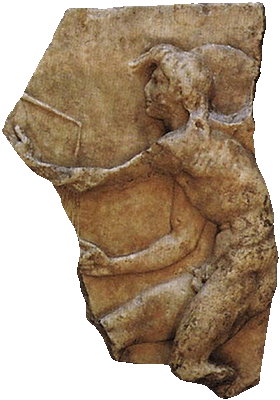
Trogir is also home of the unique relief of CAIROS, the Greek
deity - the god of luck and opportunity, that was found by my great-grandfather brother, academician and
Catholic priest Don Ivan
Delalle, who was also amateur
archaeologist.
In 1936. he wrote the first tourist guide through Trogir, and I will briefly convey his observations and some of his stories which he recorded in the Guide, the ones which you certainly won't find in today's guides or on the web.
In 1936. he wrote the first tourist guide through Trogir, and I will briefly convey his observations and some of his stories which he recorded in the Guide, the ones which you certainly won't find in today's guides or on the web.
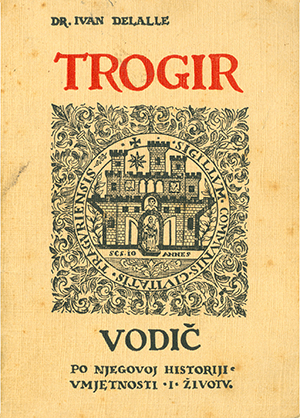
On the map you can see our siteseen route that will take us aprox. 2 hours to finish.
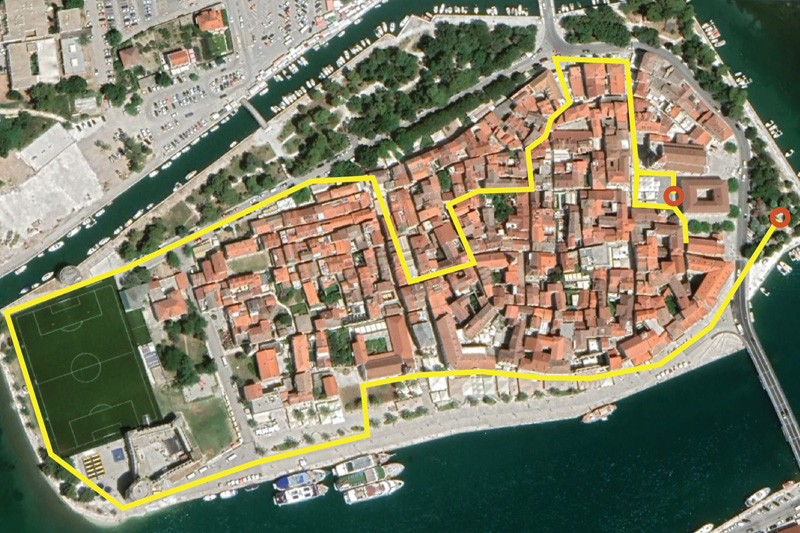
Hope to see you again next year!
More information about activities in Trogir and usefull links on
CASADEVERANO.DELALLE.COM
Our family gallery - 4 generation of artists is on
WWW.DELALLE.COM
CASADEVERANO.DELALLE.COM
Our family gallery - 4 generation of artists is on
WWW.DELALLE.COM
THE BRIEF HISTORY OF TROGIR
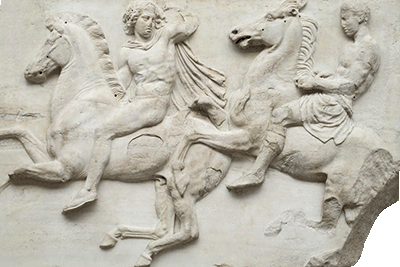
GREEK PERIOD
Begins around 3rd cetury BC, ends some time after the battle of Pharsalus between Caesar and Pompeius, year 48 AD (Romans's civil war 49–45 BC)
The city of Trogir was founded by Greeks of the Doric tribe from Syracuse in the 3rd century BC. Its original Greek name Tragurion probably comes from the nearby Kozjak hill. Strabane and Ptolemy mark Tragurion as an island, and as such it is also marked on Ptolemy's map.
As a Greek colony, it was a "distrubution center" with houses, magazines and the administration owned by the Greek colonists and traders on the Adriatic Sea, perfectly protected by its natural and strategic position. Tragurium was "faktoria" - dependent teritory of Greek colony of Issa (today island of Vis in Croatia).

ROMAN PERIOD
The habitants of Tragurium during this period had all the rights as Roman citizens. The town was under administration of nearby city of Solin, one of the most important centers of Roman province of Dalmatia, and governed by "custos" - gardian and protected with small military crew.
It's status was "oppidum" - the city, and was mentioned by roman historian Plinije for the high quality marble from surroundings. These quarries are still working today.

BYZANTINE PERIOD
After the Roman empire was divided at the east and west part, Tragurium is under the byzantune roulers with the capital in Ravena, Italy, officialy until year 752 AD, but this period in fact last a few centuries more.
This is the time where the roman way of life was gradually replaced by christian influenced, introduced by emperor Constantin the great, at he begining of fourth century AD.
The city was paying the yearly tribute to emperors, as mentioned in documents at the begining of tenth century, where was mentioned as "Tetrangurion". The city code has its origins from the time of emperor Justinian I, who recovered the teritories of Dalmatia.
During theis period, historians recorded one event - conquest of city of Solin 614 AD by Ostrogoth tribes, where Tragurion became the safe harbour for survivors.
ARRIVAL OF CROATS, FIRST KINGDOM

Arrival of Croats to the Adriatic Sea
Painting by Oton Iveković (1869 – 1939), Croatian painter
During the period of Great migrations, around seventh century, the Croats reached Dalmatian coast (after series of battles with Avars and other tribes), replacing gradually the romanic population.
Trogir, at the time called Traur or Trau, was one of the first places to be populated by Croats, due to its good position and fertile surroundings, as well as the fact that city was well preserved (opposite of the most of others on the coast at that time).
In that period and until year 1102, the kingdom of Croatia was tipical middle age state, where the christianity was spreading through the population, which original beleifs were related to many deities. Trogir had its own code, nobility and government, recognizing the croatian kings as their suverens.
First roulers of Dalmatia known by history appear in second part of seventh century, with title of "knez". Later, starting from year 925, and king Tomislav, croatian state covers huge teritories of nowdays Croatia and partialy of Bosnia and Hercegovina.
After the last of the croatian kings - Stjepan II and dinastic struggles, kingdom become the part of "personal union" with neiborhood Hungarian kingdom.

Kiss of Peace between Croatian nobles and King Koloman, 1102 - Painting by Oton Iveković
Authonomy of the city of Trogir was confirmed in year 1107 by hungarian king Koloman from Arpad dinasty, crowened also as a king of Croats.
Trogir was in that time prosperous city, holding the surrounding land, wich was the cause of endless clashes with neighbors - cities of Split, Šibenik and even Zadar.
During the Tatar invasion 1242, the hungarian king Bela IV found refuge inside city walls of Trogir. The expresion of his gratitude was a gift - huge extention of land for the city.
Apart of the nice collection in the City museum in Trogir, I recomend you to take one dat trip to see Split and visit excelent MUSEUM OF CROATIAN ARCHAEOLOGICAL MONUMENTS with the collection that covers period from the 7th to 15th century, in particular from the time of the early mediaeval Croatian State (from the 9th to 12th century).
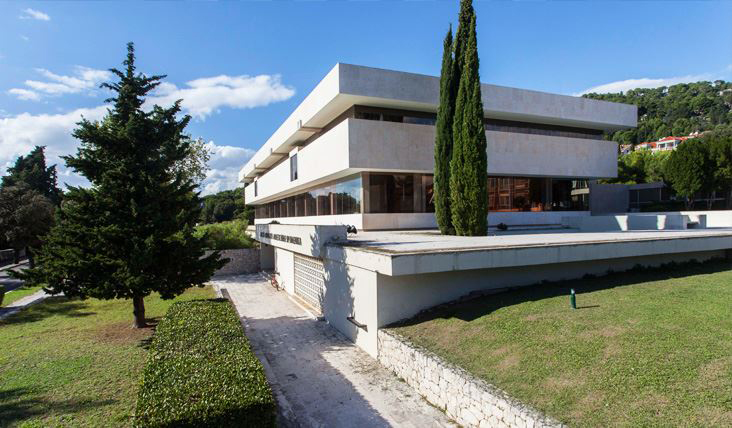
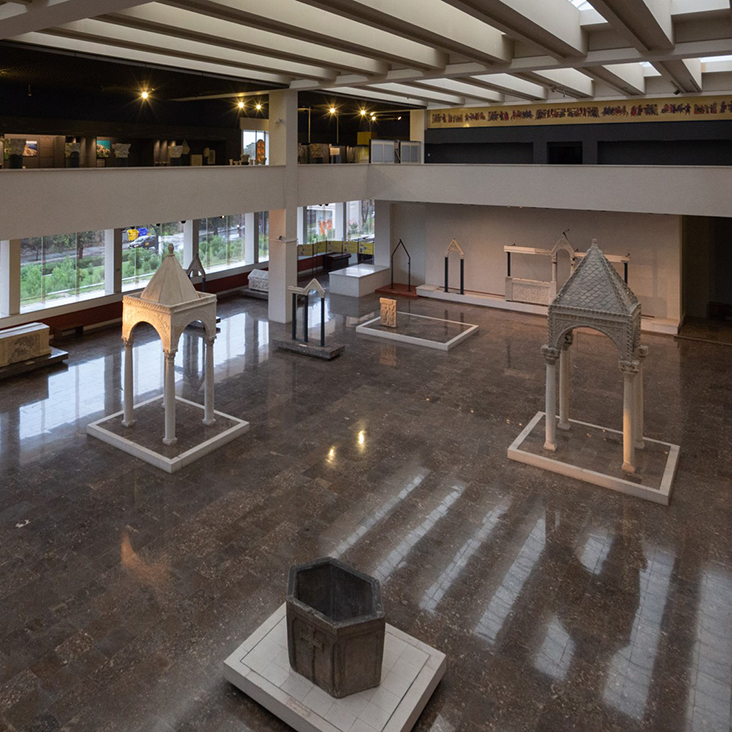
My father and grandfather worked on interior design of the museum, the fact that I am proud of!
VENICE PERIOD
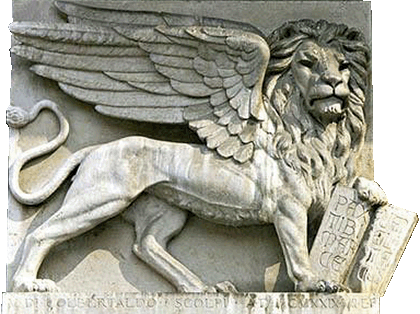
After four days of siege and under heavy bombardment of Venetian forces, at jun 20th 1420, citizens of Trogir decided to surrender. Venice - Republic of St.Marko was at the peak of its power, the richest city in Europe, with huge fleet dominating Adriatic and great part of Mediteranian sea.
This period - almost four centuries long, was a time of relative peace, development of trade and manufacture, construction of public and sacral buildings.
Almost everithing that we see today in Trogir was from this period of great prosperity, where both nobility and comons adopted lots of venetian customs in everydays life. Some of the words we are using today are from venetian dialekt.
The governer of the city was appointed by Republic with the title of "Conte e capitano" and was member of venetian nobility, but generaly Trogir had some autonomy, including the rigt on its own money - coins called "bagattino".
One of the major events of the time was maritime Battle of Lepanto 1571, where the Ottoman empire fleet was defeated by the Holy League led by Venice.
The galley "La Donna" from Trogir participated on the right wing of ally fleet and was sunked. Croatian towns and islands - Cres, Krk, Koper, Rab, Hvar, Šibenik i Zadar also took their part in this battle, after which the Ottomans were stopped in their expansion on Mediteranian and Europe.

Today, the trophy from the Battle of Lepanto - Rooster (decoration from captured enamies flag ship) is inside the hall of Chipico palace in Trogir.
FRENCH PERIOD

Domination of Venice ended with year 1797, and after a few years of anarchy, french army under command of general Auguste de Mormont occupied great part of Dalmatia, defeting his enamy - the Austrian empire.
During the period from year 1806 to 1814, under french administration, Trogir lost most of its city walls that improved hygienic condition in town.
Despite the short period, french realized impresive civile works in Dalmatia, including ilumination of the streets, new roads, swamp drainage etc.
First public scools were established also in that time, as well as construction of monumet - "glorijet" to General Marmont, in front of which the first civile weddings in history of Trogir took place.
AUSTRIAN PERIOD

For one century (1814-1918) Croatia were part of Austrian empire, well organized and powerful conglomerate of many nations, held by Habsburg dinasty.
In Trogir, most visible simbols of that time are ghotic style buildings of public scool, county cort and tabaco factory on Čiovo island, reflecting new era of enlightenment and industrial development. In years before the Great war, close to the city was built a landing stripe, where nowdays is modern Split airport.
Nobility of Trogir, that governed city affairs for centuries, were replaced with state administration that enforced law in entire empire, and new, bourgeois class emerged.
INDEPENDENCE
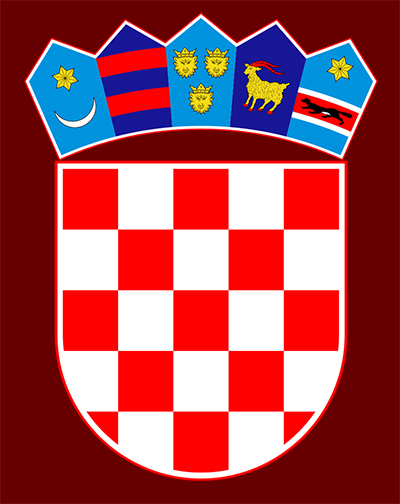
Conseckvence of the Great war was desintegration of Austrian empire, and Croatia become part of new formed Kingdom of Serbs, Croats and Slovenians, under the rule of serbian dinasty, which ended in 1941.
From 1945 Croatia is part of Socialistic Federative Republic of Yugoslavia as one of six federation units, until the 25th of june 1991 when votes on referendum decided for independance of Croatia, followed by defense-liberation war for independence and integrity of the country.
Next referendum, for membership in European was held on 22nd of january 2012.
THE FUTURE
Today, Trogir is vibrant city trying to fand compromise between preservation
of heritage and demands off modern turism.
As a part of that, city presented a new branding strategy,
a new visual identity and a new promotional video of the city.
With or without brending, my Trogir remains one of the most beautiful places on the Adriaric coast.
The author of the new visual identity of Trogir is Maja Bagić Barić
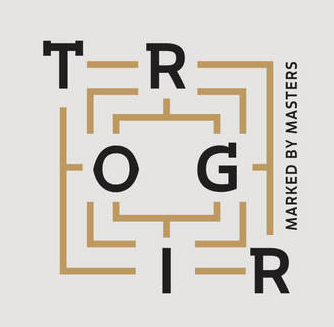
Today, Trogir is vibrant city trying to fand compromise between preservation
of heritage and demands off modern turism.
As a part of that, city presented a new branding strategy,
a new visual identity and a new promotional video of the city.
With or without brending, my Trogir remains one of the most beautiful places on the Adriaric coast.
The author of the new visual identity of Trogir is Maja Bagić Barić

